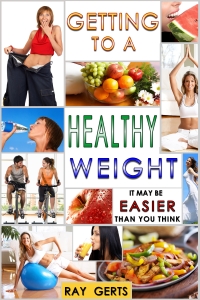
Eating a healthy balanced diet can help you keep slim and trim and give you lots of energy. You want to eat a diet with the right number of calories, lots of good foods, and a whole lot less of foods that are bad for you.
OK, that seems a little too simplistic. In reality, it takes a bit of work to eat a healthy balanced diet, so I'll walk you through the process. If you're unsure of what your diet says about you & your lifestyle, this quiz is here to help!
How Many Calories Do You Need?
On average, an adult will need somewhere in the neighborhood of 2,000 to 2,500 calories per day to maintain his or her current weight. The number of calories you need depends on your natural size (that's the size you should be), muscle mass, activity level, age, and gender. There are calorie tables and calculators that will help you estimate your daily calorie need. But keep in mind these really are estimates—since you may have differences in your metabolism, you may need a few more or a few less calories than what the calculators show. Over time, you will know to adjust your overall calorie intake up or down by monitoring your weight. The less you weight, the less calories you need. I think that 2000 to 2500 is okay for an active person that is working out everyday and weighs over 160 pounds. The average person doesn't need 2000 calories a day if they have a small frame and if your trying to lose weight 2000 might be too many calories.
Keep a Food Diary
If you need to lose weight, gain weight, watch your fat, protein, or sodium intake, you'll have an easier time if you use a food diary. You can use a notebook, or you can use a web-based diet program, to keep track of your diet online.
Start by just writing down everything you eat for 3 or 4 days before you start a diet so you can see how many calories you're currently consuming.
Look at how many healthy foods you eat now and how many unhealthy foods you choose as well.
Once you understand your current diet, you will learn which healthy foods you need to eat more of and which ones you need to eat less of. Eating the right foods will help you lose weight.
Choose the Right Foods
Once you know how many calories you need, your next step is to choose foods that will offer lots of good nutrition for the calories you take in. What that means is that for every calorie you consume, look for the nutrition you'll get out of those calories. Avoid calories that aren't giving you any nutrition like sugar. Sometimes you can burn more body fat, not by cutting calories, but by changing the foods you eat. Empty calories won't create any energy and you need energy to burn body fat.
For example, at snack time, you could choose a healthy food such as a cup of blueberries for about 85 calories or a small glazed doughnut for 100 calories. Although there is only 15 calories difference between the two, the blueberries make a much better choice for a healthy diet. The blueberries are packed with vitamins, antioxidants and very low in fat. The glazed doughnut has very little nutritional value and a lot of unhealthy fats and sugars for such a small treat. Eating snacks with protein like a cup of Greek yogurt will create energy for your body to burn body fat. Try and eat some protein at every meal. But only eat meat once a day.
Here's another example. Think about selecting fish for a meal—either 6 ounces of salmon or 5 fish sticks. Both the salmon and the fish sticks would offer roughly about the same number of calories, but the salmon would be a better choice because it's a great source of protein, B vitamins, and omega-3 essential fatty acids, while the fish sticks contain loads of unhealthy fats and sodium from the breading. Don't get confused, seafood is not meat, and it's a great substitute. Poultry is also a good substitute for meat. The trouble with meat is the animal fat you consume with the meat. You can talk to your doctor about that.
In general healthy foods are foods that are not covered in sauces, not baked into desserts, not deep-fried, heavily refined or processed.
By this I mean:
An apple is healthy; a piece of apple pie is not.
A lean piece of broiled steak is better than a greasy chicken-fried steak.
Turkey or chicken is lower in saturated fats than red meats.
Whole grain bread and cereals offer more fiber than white, refined bread and cereals.
Whole grain plain breakfast cereals are a better choice than sugar frosted breakfast cereals.
Eating a healthy balanced diet also means eating a variety of foods. Choose foods from each of the food groups to make sure you are getting all of the nutrients that you need. And pick healthy foods, not junk foods.
A lean piece of broiled steak is better than a greasy chicken-fried steak.
Turkey or chicken is lower in saturated fats than red meats.
Whole grain bread and cereals offer more fiber than white, refined bread and cereals.
Whole grain plain breakfast cereals are a better choice than sugar frosted breakfast cereals.
Eating a healthy balanced diet also means eating a variety of foods. Choose foods from each of the food groups to make sure you are getting all of the nutrients that you need. And pick healthy foods, not junk foods.
If you're not sure of the nutritional content of any packaged food, be sure to read the Nutrition Facts food labels to understand the nutritional content for the amount of calories per serving.
Dairy and Calcium Sources
Choose two or three servings from the dairy and calcium group each day. If you don’t like, or can't eat dairy products, look for deep green leafy vegetables or calcium-fortified orange juice and other foods.
1 cup of low- or non-fat milk
2 slices of cheese
1 cup of yogurt
1/3 cup of shredded cheese
1 cup cooked spinach
1 cup cooked or fresh broccoli
Whole Grains and Cereals
2 slices of cheese
1 cup of yogurt
1/3 cup of shredded cheese
1 cup cooked spinach
1 cup cooked or fresh broccoli
Whole Grains and Cereals
The United States Department of Agriculture suggests that you eat from six to eleven servings of grains and cereals each day, and at least half of those servings should be from whole grains.
Whole grains and cereals are great ways to get enough fiber in your diet and to add beneficial vitamins and minerals.
1 slice of whole wheat bread.
1/2 cup brown rice.
1/2 cup cooked quinoa.
1 cup of whole grain cereal.
1/2 cup oatmeal.
4 or 5 whole grain crackers.
2 cups air-popped popcorn
More Fruits and Vegetables
1/2 cup brown rice.
1/2 cup cooked quinoa.
1 cup of whole grain cereal.
1/2 cup oatmeal.
4 or 5 whole grain crackers.
2 cups air-popped popcorn
More Fruits and Vegetables
Fruits and vegetables provide lots of vitamins, minerals, phytochemicals and fiber, and you probably need 2 or 3 cups, or more, of vegetables per day, plus some fruit. It's difficult to imagine being healthy without eating lots of fruits and vegetables. Good fruit and vegetable serving choices include:
1/2 cup of sweet corn
1 piece of fresh fruit such as an apple, a pear or a peach
1/2 cup fruit cocktail
1/2 cup berries like strawberries or raspberries
1/2 half cup of black beans or pinto beans
1 small baked potato
1 cup of green beans
1 cup of broccoli
Healthy Protein Sources
1 piece of fresh fruit such as an apple, a pear or a peach
1/2 cup fruit cocktail
1/2 cup berries like strawberries or raspberries
1/2 half cup of black beans or pinto beans
1 small baked potato
1 cup of green beans
1 cup of broccoli
Healthy Protein Sources
You can easily get all the protein you need from plant sources such as dry beans and nuts, but most people prefer meat, fish and eggs as their main protein sources. You need 2 or 3 servings of protein each day.
3 ounces of cooked lean beefsteak.
3 ounces of lean cooked pork chop.
I cup of non-fat Greek Yogurt
One small baked chicken breast.
6 ounces of cooked oily ocean fish such as salmon or tuna.
1/2 cup of dry beans such as pinto beans or navy beans.
1 ounce of nuts, about 25 almonds, 13 cashews or 9 walnuts.
Healthy Fats and Oils ( plant based )
Olive and canola oil are good fats. So are the omega-3 fatty acids found in fish, walnuts, pumpkin seeds, flax seeds, and soy.
Trans fats are bad and eating too much saturated fat—like the fat in red meat—isn't recommended. You don’t need to add a lot of extra oil to your diet, just make healthy food and cooking choices, and you'll do just fine. The Mediterranean diet (recommended by most doctors) will only recommend red meat twice a month. Poultry and seafood are the best meat choices. The fats in seafood and poultry aren"t the same as animal fat and your body can process these fats.
Also, don't drink calories and don't drink anything containing fat. Your dairy should be non-fat and your drinks no-calorie. The best is filtrated water.
If you really want to lose your body fat than look for my Ebooks at the websites listed below. You'll get information on Healthy eating, exercise, and diet.
There’s two ebooks. “How Bad Do You Want To Lose Weight?” is available at all the online bookstores selling for $1.99. Go to any of the websites below and search the title to find my Ebook. This book gives you all you need to lose weight without spending money on gym memberships, diet plans or meal plans. Look for my book. at Amazon.com, B&N.com, iBooks, Kobo.com, Scribd.com, or Gardner Books in the U.K.
My new ebook is available on Smashwords.com, just type “getting to a Healthy Weight” in the search box at the top of the home page.







